Stephanie A. Mann's Blog, page 18
October 12, 2023
Preview: Another Confessor: William Cardinal Allen, RIP
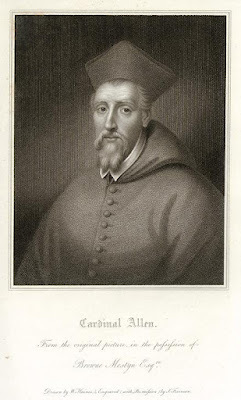 After our detour to consider the feast of Saint John Henry Newman on Monday, October 9, we'll return to our exploration of Father Henry Sebastian Bowden's Mementoes of the English Martyrs and Confessors on Monday, October 16 on the Son Rise Morning Show.
After our detour to consider the feast of Saint John Henry Newman on Monday, October 9, we'll return to our exploration of Father Henry Sebastian Bowden's Mementoes of the English Martyrs and Confessors on Monday, October 16 on the Son Rise Morning Show.Since it's the anniversary of his death in Rome on October 16, 1594 (429 years ago!), we'll focus on William Cardinal Allen, the great founder of the seminaries preparing the missionary priests to return to England. So I'll be on the air about 6:50 a.m. Central/7:50 a.m. Eastern, the last segment in the second national hour on EWTN Radio. Please listen live here or catch the podcast later here.
Father Bowden has a few entries for Cardinal Allen, who was not a martyr but prepared many priests for the missionary field who became martyrs, and the one I chose for today highlights Allen's regret that he had not been able to offer his own life for the Lord.
The Catholic Encyclopedia provides great evidence for William Cardinal Allen's significance for the recusant/penal/missionary era in England. Born in 1532,
He was the third son of John Allen of Rossall, Lancashire, and at the age of fifteen went to Oriel College, Oxford, where he graduated B.A. in 1550, and was elected Fellow of his College. In 1554 he proceeded M.A., and two years later was chosen Principal of St. Mary's Hall. For a short time he also held a canonry at York, for he had already determined to embrace the ecclesiastical state. On the accession of Elizabeth, and the re-establishment of Protestantism, Allen was one of those who remained most stanch on the Catholic side, and it is chiefly due to his labours that the Catholic religion was not entirely stamped out in England. Having resigned all his preferments, he left the country in 1561, and sought a refuge in the university town of Louvain. The following year, however, we find him back in England, devoting himself, though not yet in priest's orders, to evangelizing his native county. His success was such that it attracted notice and he had to flee for safety. For a while he made himself a missionary centre near Oxford, where he had many acquaintances, and later for a time he sought protection with the family of the Duke of Norfolk. In 1565 he was again forced to leave England, this time, as it turned out, for good. He was ordained priest at Mechlin shortly afterwards. The three years Allen spent as a missioner in England had a determining effect on his whole after life. For he found everywhere that the people were not Protestant by choice, but by force of circumstances; and the majority were only too ready, in response to his preaching and ministrations, to return to Catholicity. He was always convinced that the Protestant wave over the country, due to the action of Elizabeth, could only be temporary, and that the whole future depended on there being a supply of trained clergy and controversialists ready to come into the country whenever Catholicity should be restored.And authors like Philip Hughes and Eamon Duffy praised the kind of formation Allen designed for the missionary priests--they weren't going to be in parishes and they were probably going to be alone most of the time--they needed to be trained for apologetics with knowledge of Church history including English Church history, the Bible, and Church doctrine. They needed to preach in English, obviously, and he also prepared them carefully for their spiritual life in the missionary field: fasting twice a week for the conversion of England, use of St. Ignatius's Spiritual Exercises, frequent Confession as spiritual development, not merely juridical forgiveness of sins, and other spiritual devotions.
In his book Reformation Divided , which I reviewed several years ago for the St. Austin Review, Duffy concurs with the Catholic Encyclopedia's view: "because of Allen “English Catholicism was given an institutional lifeline to the larger world of Christendom . . . because of him, it survived.” (p. 163)"
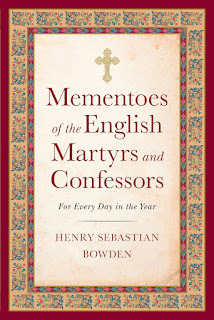 With the title "Father of Many Sons" on page 328 and the Scripture verse from 1 Corinthians 4:15: "For if you have ten thousand instructors in Christ, yet not many fathers. For in Christ Jesus, by the gospel, I have begotten you", Father Bowden highlights Cardinal Allen's last months and deathbed:
With the title "Father of Many Sons" on page 328 and the Scripture verse from 1 Corinthians 4:15: "For if you have ten thousand instructors in Christ, yet not many fathers. For in Christ Jesus, by the gospel, I have begotten you", Father Bowden highlights Cardinal Allen's last months and deathbed:"Douay," he wrote, a few months before his death, "is as dear to me as my own life, and which hath next to God been the beginning and ground of all the good and salvation which is wrought in England." Created cardinal by Sixtus V, he became the natural protector of the afflicted English Catholics, and, by his writings and influence, powerfully aided their cause. Dying, he said that the greatest pain he suffered was to see that after by God's help he had induced so many to endure imprisonment, persecution, and martyrdom in England, he had deserved by his sins to end his life on that bed--Rome, October 16.
May he rest in the peace of Christ.
October 9, 2023
Pole and His Books at Lambeth
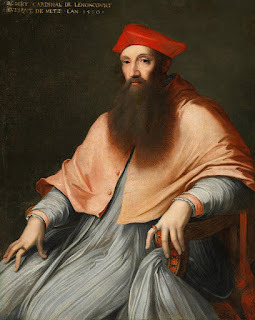 The Reformation Cardinal exhibition at Lambeth Palace Library opened last week. It's an exhibition featuring some of his books (appropriately enough for a Library):Pole’s was a life steeped in books. He was a scholar and a collector of one of the period’s most intriguing libraries, and it was in books that he fought his battles and made his strongest statements for reform. This exhibition gathers books from Oxford, London, and Rome to tell his story. The Pole who emerges is a complex and agonized individual, someone of sincerity and of evident charm, a connoisseur, a man of strong faith, a European statesman—and a battler for moderation within the limits of the possible.
The Reformation Cardinal exhibition at Lambeth Palace Library opened last week. It's an exhibition featuring some of his books (appropriately enough for a Library):Pole’s was a life steeped in books. He was a scholar and a collector of one of the period’s most intriguing libraries, and it was in books that he fought his battles and made his strongest statements for reform. This exhibition gathers books from Oxford, London, and Rome to tell his story. The Pole who emerges is a complex and agonized individual, someone of sincerity and of evident charm, a connoisseur, a man of strong faith, a European statesman—and a battler for moderation within the limits of the possible.There's an excellent digital exhibition for those of us who can't get to London before December 15, divided into "eras" of his life as a student, controversialist against Henry VIII, Cardinal scholar in Rome, Viterbo, and Trent, and Archbishop of Canterbury during the reign of Mary I. Each section highlights books, letters, and other documents: the books he studied, the books he wrote, books he inspired to renew the life of the Catholic Church in England, and books evaluating his role in the English Reformation and that renewal.
The summing up:
Since [his death], he has been at the heart of two contrasting legends of English history. In one he is seen as the cruel agent of ‘Bloody Mary’ and an instigator of the burning alive of approximately three hundred English and Welsh men and women for their non-Catholic religious beliefs. The other legend of Pole as a saint and almost a martyr for the Catholic faith began to form immediately after his death. Biographies of the late cardinal were written and edited by men who had known him, notably Ludovico Beccadelli, and by supporters, not least at New College in Oxford, where a third of the fellows refused to accept Elizabeth’s religious settlement of 1559, resigned their fellowships, and moved abroad.
The role that Pole had played, his legacy for English Catholics in particular and for the European Counter-Reformation more broadly, would remain as meaningful as it was complex.
You have click on each image in the sections, scroll down a narrative panel or click on arrows to follow the explanation about the context and the provenance of each book or document, and then close the tab to return to the exhibition page and open another image.
Two of the most interesting in the section on Henry VIII and Pole's "disagreements" are a Psalter with St. Thomas a Becket's name all blotted out and Pole's copy of the Bishop of Exeter John de Grandisson's Life of Becket , one of only six copies of the work to survive Henry VIII's attacks on the martyred saint.
Image Credit (Public Domain:) El cardenal Reginald Pole, por Sebastiano del Piombo
October 5, 2023
Preview: Why St. John Henry Newman Should be on the USA's Liturgical Calendar
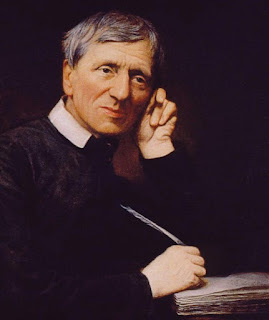 We're going to interrupt our series on the Mementoes of the English Martyrs and Confessors on the Son Rise Morning Show on Monday, October 9 to discuss the feast of Saint John Henry Newman. I'll be on the show at my usual time, around 6:50 a.m. Central/7:50 a.m. Eastern, to talk with Anna Mitchell or Matt Swaim. Please listen live here or listen to the podcast at your convenience here.
We're going to interrupt our series on the Mementoes of the English Martyrs and Confessors on the Son Rise Morning Show on Monday, October 9 to discuss the feast of Saint John Henry Newman. I'll be on the show at my usual time, around 6:50 a.m. Central/7:50 a.m. Eastern, to talk with Anna Mitchell or Matt Swaim. Please listen live here or listen to the podcast at your convenience here.Saint John Henry Newman died on August 11, 1890 and usually his feast would be celebrated on the date of his death, but it was already the feast of Saint Clare of Assisi. So the anniversary of his joining the Catholic Church on October 9 in 1845 was chosen instead when his beatification was announced.
In England and Wales October 9 is celebrated as a Feast now (with the Gloria recited or sung at Mass). There were already three optional memorials on October 9 (St. Denis and Companions, St. John Leonardi, and St. Paulinus of York, an English saint) before his canonization in 2019, meaning that either the Weekday or Ordinary Time, or the memorial of one of those three saints, could be celebrated. The English Bishops moved those three optional memorials to October 10 to make room for Newman's Feast on October 9. (The Anglican Ordinariate of the Chair of St. Peter in the United States also celebrates this Feast day.)
I propose that the United States Conference of Catholic Bishops do something similar to make room for Newman on our Liturgical Calendar and offer three reasons, in ascending order of importance.
At this time, his feast is not on the Liturgical Calendar at all, not even as an optional memorial.
I'm not going to be greedy enough to propose his feast as a Feast in the USA, but as the Memorial, thus the only feast to be celebrated on October 9--and that St. Denis and St. John Leonardi be moved as optional memorials on October 10.
My three reasons: First:
Newman and the New Evangelization: After teaching a graduate class on Newman and the New Evangelization for our local Newman University the past two summers, I'm convinced that he is an excellent patron saint for this project, which includes the Eucharistic Revival, to renew the faith of Catholics, particularly the laity.
Newman offers many insights into how to revive and re-enforce Catholics' belief in what they believe and what the Church teaches, and to integrate it more firmly in their lives. He encouraged both growth of knowledge of the truths of the Catholic Faith and the actions that demonstrated that knowledge and belief. As he told the Little Brothers of the Oratory in Birmingham:
I want a laity, not arrogant, not rash in speech, not disputatious, but men who know their religion, who enter into it, who know just where they stand, who know what they hold and what they do not, who know their creed so well that they can give an account of it, who know so much of history that they can defend it. I want an intelligent, well-instructed laity. I wish you to enlarge your knowledge, to cultivate your reason, to get an insight into the relation of truth to truth, to learn to view things as they are, to understand how faith and reason stand to each other, what are the bases and principles of Catholicism and where lies the main inconsistencies and absurdities of the Protestant theory. I have no apprehension you will be the worse Catholics for familiarity with these subjects, provided you cherish a vivid sense of God above and keep in mind that you have souls to be judged and saved. In all times the laity have been the measure of the Catholic spirit; they saved the Irish Church three centuries ago and they betrayed the Church in England. You ought to be able to bring out what you feel and what you mean, as well as to feel and mean it; to expose to the comprehension of others the fictions and fallacies of your opponents; to explain the charges brought against the Church, to the satisfaction, not, indeed, of bigots, but of men of sense, of whatever cast of opinion.
By preparing those Little Brothers of the Oratory with vibrant knowledge and conviction of the Faith, Newman wanted them to use their personal influence to help others gain that assurance. Quoting an earlier work from his Anglican days (The Tamworth Reading Room letters of 1841) in the Grammar of Assent (1870), he proposed:
The heart is commonly reached, not through the reason, but through the imagination, by means of direct impressions, by the testimony of facts and events, by history, by description. Persons influence us, voices melt us, looks subdue us, deeds inflame us. Many a man will live and die upon a dogma: no man will be a martyr for a conclusion.
He dedicated an entire sermon to this theme, "Personal Influence, the Means of Propagating the Truth" as an Anglican, so it was a constant in his life that he wanted to prepare Christians to share their Faith effectively through formal education, sermons, literature, friendships, and arguments and apologetics--in that order. Thus they would be able to move others to embrace the Truth.
I'm not alone in this belief about Newman and the New Evangelization: Bishop Robert Barron, Bishop James Conley, the late Father Ian Ker, and many others have observed this.
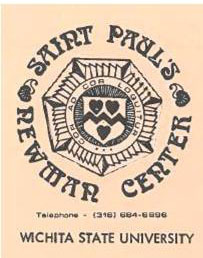 My Second Reason:
My Second Reason: The Newman Centers at secular universities in the USA: Since the first Newman Club was founded at the University of Pennsylvania in 1893--just three years after his death!--Newman Centers at secular universities have provided students with Holy Mass and the other Sacraments, continuing religious education, social activities, a place a study, etc. The National Catholic Register just published an article about them last month.
As the Newman Ministry website notes:
Over 80% of students stop practicing the faith in college—that’s most of the campus! The problem is, many students struggle to find great friends that share their faith.
It can be overwhelming to walk onto a new campus with no friends. There’s so many opportunities and decisions to make. Faith usually isn’t at the top of the list.
That’s where we come in. Newman Ministry connects students with a Catholic community on campus, so their faith thrives in college and beyond.
So Saint John Henry Newman has had an influence in the USA since the late 19th century through these campus centers for Catholics, even though not all of them still use his name. I attended the Newman Center at Wichita State University and learned about Saint John Henry Newman there (it now does not use his name, but that's still the way I think of it!).
My Third Reason:
Newman's Miracles
Both the miracle accepted for his Beatification in 2010, and the miracle accepted for his Canonization in 2019 occurred in the United States of America, and both of them through the influence of EWTN!
Deacon Jack Sullivan had watched a program on then-Venerable John Henry Newman on EWTN and decided to ask Newman's intercession for his back problems:
“They were discussing not only Newman’s teachings, but the process of beatification,” Sullivan explained to EWTN. “At the end of the program, they had on screen an address of the Oratory in Birmingham [England] and they said, ‘if you receive any Divine favors, please contact that Oratory.’
“I happened to have a piece of paper and a pen on the table in front of me and I wrote it down. Then, I thought, ‘If I wrote it down, I might as well pray to Newman.”
“I prayed, ‘Please Cardinal Newman, help me with God so that I might walk and go back to classes and be ordained.’”
After a later surgery that found greater damage to his spine than thought:
On August 15, 2001, four days after his surgery, Sullivan again prayed to Cardinal Newman.
“I felt tremendous heat and a tingling feeling all over that lasted for five or 10 minutes,” Sullivan said. “After I experienced this, I immediately stood up straight. I was able to walk, not with a walker or cane, but on my own, without any difficulty or pain. I walked all over the hospital, just joyful. I never needed any pain medication after that.”
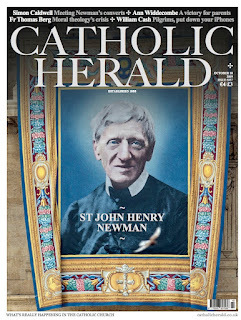 Melissa Villalobos was inspired by the same program to ask Newman's intercession in the second miracle:
Melissa Villalobos was inspired by the same program to ask Newman's intercession in the second miracle:Melissa Villalobos lives near Chicago. As a college student at Washington University in St Louis she met her husband-to-be David Villalobos, and it was there that she also first came across the Newman Center, which she had assumed was named after a rich benefactor.
Soon after graduating in 2000, she watched a TV show on EWTN called ‘Newman At 2000’. In 2010 she watched the Beatification of Cardinal Newman on EWTN, and remembers being very moved. She was given a prayer card with the face of Newman, and she began to read his works on the Internet and her devotion to him grew, so that she would turn in prayer often to ask him for favours and inspiration. . .
When she was pregnant with her fifth child, Gemma, Villalobos began to experience bleeding from uterus. During a particularly dangerous hemorrhage, she prayed:
"Please Cardinal Newman make the bleeding stop!” As soon as she had finished her sentence the bleeding stopped. She immediately thanked Cardinal Newman, convinced that she had been healed by his intercession. She was then able to hurry downstairs and check on her children with no further bleeding.
On a visit to the doctor later that very same day, 15 May, he confirmed with an ultrasound that Melissa had been cured of her condition, and her placenta was no longer torn. The bleeding never returned. . . .
These two miracles are further evidence of devotion to Newman in the United States.
There's at least one more reason I've thought of: the many American converts, especially from the Episcopalian church, who have been influenced by Saint John Henry Newman. Like the late Thomas Howard, Holly Ordway, Father Dwight Longenecker, Deacon Scott Carson, Monsignor Jeffrey Stinson, etc., etc., many have attested to Newman's influence on them. Just peruse the stories collected on the Coming Home Network website and you'll see what he has meant to converts in the 20th and 21st centuries in the United States.
Finally, I do have a very personal reason for this proposal: after studying the works of Saint John Henry Newman since I first learned about him as a college sophomore, writing about him, teaching about him, and praying for his intercession, I'd like to attend a daily Mass on his feast day on October 9 in the next year or so.
Saint John Henry Newman, pray for us!
September 28, 2023
Preview: Another Confessor, George Gilbert and "The Catholic Association"
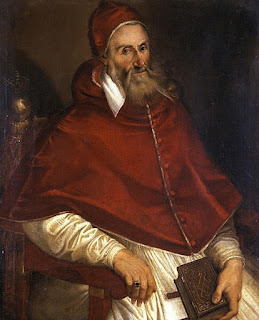 Just a reminder, when Father Henry Sebastian Bowden included Confessors in the title of his
Mementoes
, men and women who suffered for their loyalty to the Catholic Faith during the long English Reformation but did not suffer martyrdom, he is not indicating that these Confessors are Beatified or Canonized Saints. (Blesseds and Saints are either martyrs or confessors), so there could be some confusion.
Just a reminder, when Father Henry Sebastian Bowden included Confessors in the title of his
Mementoes
, men and women who suffered for their loyalty to the Catholic Faith during the long English Reformation but did not suffer martyrdom, he is not indicating that these Confessors are Beatified or Canonized Saints. (Blesseds and Saints are either martyrs or confessors), so there could be some confusion.On Monday, October 2, we'll discuss another Confessor, George Gilbert, SJ, in our continuing series on the Son Rise Morning Show. So I'll be on at my usual time, around 6:50 a.m. Central/7:50 a.m. Eastern, to talk with Anna Mitchell or Matt Swaim about George Gilbert, SJ, and The Catholic Association he formed with the approval of Pope Gregory XIII (at left). Please listen live here or find the podcast later here.
The Catholic Association was a group of brave, young Catholic men of land and fortune who dedicated themselves to raising funds to support the missionary priests, to help those missionary priests with the contacts they needed to, as safely as possible, celebrate the Sacraments with the recusant, underground Catholic community. As the Catholic Encyclopedia explains in the entry for another member of the Association, Stephen Brinkley,
The members undertook to content themselves with the bare necessaries of their state of life, to spend the remainder of their goods in the cause of the Church, and to devote themselves wholly to the salvation of souls and the conversion of heretics.
They did so at a particularly dangerous time for Catholics in England as the great Jesuit missionary martyrs St. Edmund Campion, St. Robert Southwell, and other Jesuit missionaries Father Robert Parsons, Henry Garnet, and John Gerard, were coming to England. Stephen Brinkley helped Father Edmund Campion print and distribution his Decem Rationes (Ten Reasons), producing them at a hidden press in the Stonor House so they were placed on benches of St. Mary's the Virgin in Oxford in 1581, the year of Campion's imprisonment, torture, disputations on the Decem Rationes, trial, and execution. Brinkley was also arrested and tortured that year.
As Father Bowden describes George Gilbert, he was:
OF an old Suffolk family, possessed of a large fortune, a Puritan by profession, he followed in his youth the life of a gay cavalier. Going abroad, however, his eyes were opened to the faith, and he was reconciled by Father Parsons at Rome. Returning to England, he devoted himself to the services of the missionary priests, and formed for this purpose, with Lord Henry Howard, Lord Oxford, Mr. Southwell, Lord Paget, and other young men, a " Catholic Association," which was solemnly blessed by Pope Gregory XIII, on April 14, 1580. The members promised to imitate the lives of the Apostles, and to devote themselves wholly to the salvation of souls and the conversion of heretics. They were to be content with the necessaries of their state, and to bestow all the rest for the good of the Catholic cause. They supplied the priests with altar requisites, with horses, and various changes of apparel, and disguised themselves as grooms or servants and escorted the priests through the country from house to house. To Gilbert is due the first idea of the frescoes of the English martyrs in the English College, Rome. He was admitted to the Society of Jesus on his death-bed.
The Catholic Association found danger very quickly, as the arrests of 1581 led Parsons, Brinkley, and Gilbert to leave England. The Dictionary of National Biography provides these details, showing that Gilbert continued to work for Catholics in England in exile:
Proceeding afterwards to Rome, he entered the English College as a pensioner, and devoted himself to promoting the catholic (sic) cause in England. Gregory XIII frequently consulted him on a matter of high importance that necessitated his going to France. Gilbert was so eager about his preparations for departure that he was seized with a fever, which terminated fatally on 6 Oct. 1583. While on his deathbed he was admitted into the Society of Jesus. The pope declared that his death would be a serious blow to Catholicism in England.
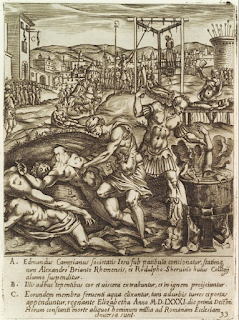 Gilbert incurred great expense by covering the walls of the English College at Rome with frescoes of the English martyrs.. . .
Gilbert incurred great expense by covering the walls of the English College at Rome with frescoes of the English martyrs.. . .
In a way, Gilbert's greatest service to the Jesuit and other priests may have been those frescoes of the English martyrs in the Venerabile in Rome (the Venerable English College). They were important to the Cause of the Martyrs of England and Wales, as evidence of a cult of devotion and veneration. Engravings of the frescoes were collected after Gilbert's death on October 6, 1583, by a Marian era priest, Father William Good, SJ in a volume titled Ecclesiae Anglicanae Trophaea (The trophies of the English Church). Among the martyrdoms pictured: Saints Edmund Campion SJ, Alexander Briant SJ, and Ralph Sherwin, on December 1, 1581.
Father Bowden chose a verse from the Acts of the Apostles to accompany this confessor's memento (4:32):
And the multitude of believers had but one heart and one soul: neither did any one say that aught of the things which he possessed, was his own; but all things were common unto them.
May George Gilbert and other members of the Catholic Association rest in the peace of Christ.
Image Credit (Public Domain): Pope Gregory XIII attributed to Bartolomeo PassarottiImage Credit (Public Domain): Execution of Edmund Campion, Alexander Briant and Ralph Sherwin: engraving by Giovanni Battista Cavalieri (after Niccolò Circignani's frescoes in the chapel of the Venerable English College in Rome), and published in Ecclesiae Anglicanae Trophaea (Rome 1584). Stonyhurst Collections
September 26, 2023
Reginald Cardinal Pole Exhibition at Lambeth Palace
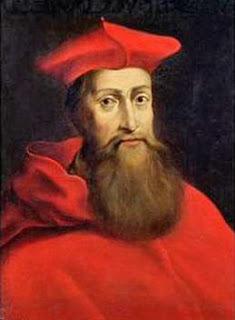 The Archbishop of Canterbury's London headquarters, Lambeth Palace, is presenting an exhibition in its Library on the last Catholic Archbishop of Canterbury, Reginald Cardinal Pole, beginning on October 5. The title of the exhibition is "Reformation Cardinal: Reginald Pole in Sixteenth-Century Italy and England":
The Archbishop of Canterbury's London headquarters, Lambeth Palace, is presenting an exhibition in its Library on the last Catholic Archbishop of Canterbury, Reginald Cardinal Pole, beginning on October 5. The title of the exhibition is "Reformation Cardinal: Reginald Pole in Sixteenth-Century Italy and England":Born in 1500 into the highest circles of the English aristocracy, becoming both cardinal and England’s last Catholic Archbishop of Canterbury, Reginald Pole steered a perilous course through the storm of the European Reformation. A brilliant scholarly career in Italy took him to Rome, from where he launched an audacious campaign against Henry VIII’s regime and its anti-papal policies. His intellectual leadership of the Church mirrored his position in a circle of close spiritual friends, which included the artist Michelangelo. Returning to England after the accession of the Catholic Queen Mary, Pole reconciled the English Church to Rome and did much to re-establish Catholicism before his premature death at Lambeth in 1558. This exhibition brings together books from Oxford, London, and Rome to tell the story of this complex, charismatic individual.
I'll be on the lookout for more information about the exhibition next week.
Consulting the British History Online entry for Lambeth Palace, I found some information about the Cardinal Archbishop's time there:
To Cardinal Pole, who succeeded to the archbishopric, is attributed the foundation of the long gallery in Lambeth Palace. He was appointed to the deanery of Exeter by Henry VIII.; but was abroad when the king abolished the Papal authority in England, and, not attending when summoned to return, was proclaimed a traitor and divested of his deanery. In 1536 he was made cardinal; and when Mary ascended the throne he returned to England as legate from Pope Julius III., and had his attainder reversed by special Act of Parliament. "Few churchmen have borne so unblemished a reputation as this eminent prelate, and few have carried themselves with such moderation and meekness. He died November 17, 1558, being the very day on which Queen Mary herself died."
andSeveral circumstances respecting Cardinal Pole are noticed as having happened here by Strype, Burnet, and other authors. Queen Mary is said to have completely furnished Lambeth Palace for his reception at her own cost, and to have frequently honoured him with her company. "In 1554, on his arrival from the Continent, having presented himself at court, he went from thence in his barge to his palace at Lambeth; and here he soon afterwards summoned the bishops and inferior clergy, then assembled in convocation, to come to him to be absolved from all their prejudices, schisms, and heresies. The following month all the bishops went to Lambeth to receive the cardinal's blessing and directions."
"On the 21st of July, 1556," says Strype, "the queen removed from St. James's in the Fields into Eltham, passing through the park to Whitehall, and took her barge, crossing over to Lambeth unto my lord cardinal's palace; and there she took her chariot, and so rid through St. George's Fields to Newington, and so over the fields to Eltham, at five o'clock in the afternoon. She was attended on horseback by the cardinal, &c., and by a conflux of people to see her grace, above ten thousand." In the winter of the same year the queen removed from St. James's through the park, and took her barge to Lambeth, where she visited Cardinal Pole. After dinner she resumed her journey to Greenwich, where she kept her Christmas.
In 1558 Cardinal Pole died at Lambeth Palace. His body lay in state forty days, when it was removed to Canterbury Cathedral for interment.
The website for Lambeth Palace includes a picture of the "descendant" of one of the fig trees Cardinal Pole had planted on the grounds:
Fronting the Great Hall on the west side of the courtyard is a magnificent White Marseille fig tree, which came to Lambeth Palace with the last Roman Catholic Archbishop, Cardinal Reginald Pole, in 1556. He served Mary I (Mary Tudor, daughter of Henry VIII and Catherine of Aragon) until they both died on the 17th November 1558. The tree was relocated to this position in 1828 when Edward Blore built the residential block, and it bears abundant fruit every autumn.
So the Archbishop of Canterbury can have his figgy pudding every Christmas!?!
It will be interesting to see how the curators use the books from Oxford, London, and Rome "to tell the story of this complex, charismatic individual."
September 21, 2023
Preview: Two Confessors (Watson and Bonner) at St. Paul's Cross
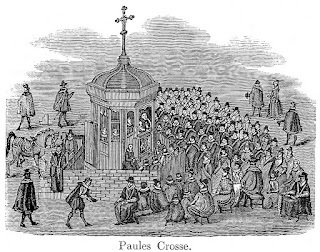
Father Henry Sebastian Bowden included Confessors in the title of his Mementoes, men and women who suffered for their loyalty to the Catholic Faith during the long English Reformation but did not suffer martyrdom. On Monday, September 25, we'll discuss two of these Confessors--both repentant Confessors indeed--in our continuing series on the Son Rise Morning Show.
So I'll be on at my usual time, around 6:50 a.m. Central/7:50 a.m. Eastern, to talk with Anna Mitchell or Matt Swaim about Bishops Thomas Watson (of Lincoln) and Edmund Bonner (of London). Please listen live here or find the podcast later here.
Father Bowden describes Bishop Thomas Watson as "A Peacemaker" on p. 307, but before his final acts of repentance during the reign of Elizabeth I, he contributed greatly to the divisions in the Church. He was a colleague of Bishop Saint John Fisher at Cambridge University, serving as Master of St. John's College, founded by Lady Margaret Beaufort, Henry VIII's grandmother. Unlike his superior, however, he took the Oath of Supremacy, but Bowden notes that he "maintained in all other points the Catholic Faith." Without unity with the universal Catholic Church and the Vicar of Christ, that would be difficult to do, I think. He upheld certain Catholic teachings, but not all.
During the reign of Edward VI he was imprisoned for "preaching in its defense" but was freed from prison during the reign of Mary I and asked by the Queen to preach at St. Paul's Cross outside St. Paul's Cathedral in London and promoted to Dean of Durham and then Bishop of Lincoln. Under Elizabeth I, he was imprisoned for "contempt and contumacy" because this time, he refused the Oath of Supremacy. Bowden provides the detail that he wrote to Lord Cecil on October 6, 1578 that he was both blind and lame. He was confined in Wisbech Castle during the time of the "Wisbech Stirs", when about 32 or 33 Catholic priests, Jesuit and secular, were detained there and argued about keeping Fast Days and other spiritual/penitential matters. Bowden describes him as trying to keep the peace.
He died on September 27, 1584, "having proved by twenty years of bonds his repentance for his early fall." The Bible verse is 1 Corinthians 1:10: "Now I beseech you, brethren, by the name of our Lord Jesus Christ, that you all speak the same thing, and that there be no schisms among you; but that you be perfect in the same mind, and in the same judgment."
Bishop Bonner of London is a more controversial figure, one of John Foxe's great villains for his questioning of suspected heretics during the reign of Mary I, but he's also controversial--and perhaps even more remarkable--for his stalwart support of Henry VIII's "Great Matter". Bowden titles his memento "Faithful in the End" (p. 285)
Bonner was a chaplain to Henry VIII and a member of Thomas Cardinal Wolsey's staff, and was zealous in promoting the king's Great Matter of the the divorce (annulment) and remarriage. Bowden includes the detail that Bonner "behaved, as he tells us himself, insolently to the pope." Rewarded for his service to the king, he was consecrated the Bishop of London in 1540 but of course was never confirmed by Papal Decree.
The Catholic Encyclopedia provides some additional details about his efforts in that diocese:
Almost his first duty was to try heretics under Henry's Act of the Six Articles, and though his action seems to have been only official, accusations of excessive cruelty and bias against the accused were spread broadcast by his enemies, and from the first he seems to have been unpopular in London. During the years 1542-43 he was again abroad in Spain and Germany as ambassador to the emperor, at the end of which time he returned to London. The death of the king on 28th January 1547, proved the turning point in his career Hitherto he had shown himself entirely subservient to the sovereign, supporting him in the matter of the divorce, approving of the suppression of the religious houses, taking the oath of Supremacy which Fisher and More refused at the cost of life itself, and accepting schismatical consecration and institution. But while acting in this way, he had always resisted the innovations of the Reformers, and held to the doctrines of the old religion. Therefore from the first he put himself in opposition to the religious changes introduced by Protector Somerset and Archbishop Cranmer.
He opposed the "Visitors" appointed by the Council, and was committed to prison for so doing Though not long a prisoner, after two years of unsatisfactory struggle he came again into conflict with the Protector owing to his omission to enforce the use of the new Prayer Book. When ordered to preach at St. Paul's Cross he did so, but with such significant omissions in the matter which had been prescribed touching the king's authority, that he was finally deprived of his see and sent as a prisoner to the Marshalsea. . . .
for the first time! and finally freed upon the accession of Mary I, whereupon Bonner was canonically reinstated as Bishop of London.
He assisted Reginald Cardinal Pole with the program of re-establishing the infrastructure and teachings of the Catholic Church in England, writing sermons to be read throughout his diocese and a catechism. Regarding his efforts to investigate heretics, Bowden notes that Bonner always wanted to "reconcile them to the Church before handing them over to the civil authorities."
When Mary died and Elizabeth came to the throne, Bonner again proved himself loyal to the Church, refusing to stop the celebration of Mass and the praying of the Divine Office at St. Paul's. Bowden quotes him as responding to those demands, "I possess three things--soul, body, and property. Of the two last you can dispose at your pleasure." He was imprisoned in the Marshalsea and died there on September 5, 1538. Bowden cites Psalm 50:14: "Restore unto me the joy of thy salvation, and strengthen me with a perfect spirit." He includes another memory of Bishop Bonner on page 319 with title "Poverty Preferred" and the verse from James 2:5.
By including these two fallen and repentant Confessors in his Mementoes of the English Martyrs and Confessors, Father Bowden is clearly offering examples of how we, like them, can repent of our sins, be reconciled to God and the Church, and begin again through God's Grace and Mercy.
May they rest in peace.
Image Credit (Public Domain): Open air preaching at St. Paul's Cross.
September 16, 2023
William Byrd's Three Masses on the BBC's "Listening Service"
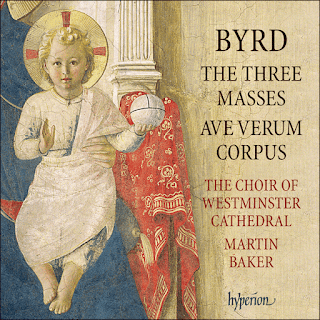
We are celebrating the 400th anniversary of William Byrd's death on July 4, 1623 throughout this year. Of course, it's being celebrated mostly in England!
The BBC has published a Composer of the Month article on his life and times in their classical music magazine, Tom Service has commented particularly on his Three Masses on his BBC program, Stile Antico has released a new CD, his works were performed at the Proms in Londonderry, and the Latin Mass Society in England is sponsoring a Byrd Festival with his Masses and works from the Gradualia including in the celebration of Mass at Corpus Christi Maiden Lane and other churches, etc., etc.
What's so good about the Latin Mass Society's effort is described in their program for the Festival:
This year, 2023, witnesses the four hundredth anniversary of the death of William Byrd, one of England’s greatest Renaissance composers. The Latin Mass Society is marking the occasion with a Byrd 400 Festival ofsacred music. From September 2023 the Southwell Consort, under the direction of Dominic Bevan, will perform music from Byrd’s Masses, Cantiones Sacrae, and sacred motets, as well as his organ music.
Byrd’s sacred music was composed for the Roman Catholic Mass during a time when English Catholics faced religious persecution. Despite the clandestine climate in which it was composed, much of Byrd’s polyphony is sumptuous. It represents the last artistic flowering of an English liturgical tradition almost stamped out at the Reformation.
The words, chant and ritual actions of the traditional Latin Mass were ancient in Byrd’s own day, and they have remained essentially unchanged ever since. It is within this context that this festival of sacred music will take place, presenting Byrd’s work in the original liturgical context for which it was composed.
In his "Listening Service" program, Tom Service makes a suggestion about these three Masses--meaning the ordinary text of the Mass, the Kyrie, Gloria, Credo, Sanctus/Benedictus, and Angus Dei--were integrated into the celebration of the secret Masses for which the works were intended. He notes the presence of the "custos" mark at the end of each part, suggesting that it means that the Mass parts were sung as the Mass was being "spoken". Service suggests that the Masses lasted as long as the Byrd Mass settings, around 20 minutes.
But I wonder about that, because not all Masses include all the parts of the ordinary, depending on the feast or feria being celebrated. In the Traditional Latin Mass, a Missa Cantata is sung/chanted by the priest, not spoken, and not all parts of the Mass, like the Roman Canon, are audible to the congregation even at a Missa Cantata; a Low Mass is a mostly silent Mass and usually these parts of the Mass are not sung. (That's assuming that the Mass revisions that Pope Pius V approved in 1570 for the Roman Missal, the Masses Catholic missionary priests were offering in England at the time Byrd was a Catholic and wrote these three Masses, are comparable to the Missa Cantatas and Low Masses I attend today.)
The Masses Byrd attended in Stondon Massey in Essex were celebrated under duress because it was illegal to say or attend Mass and everyone there, especially the priest, was in great danger, and so Service thinks these 20 minute Masses would have been practical, safe, and even politic, under the circumstances--to sum it up, serviceable.
As John Milsom wrote in the cover notes to the 2013/2014 CD of Byrd's Three Masses and the Ave Verum Corpus depicted above:
. . . In the 1590s, when his Masses were composed, there were no Catholic church choirs in England, and he never imagined them being sung proudly and publicly in cathedrals for all to hear. Few hard facts survive about the kinds of performances Byrd’s Catholic works received in his lifetime, but we can speculate with a fair degree of confidence. In the age of the Spanish Armada and the Gunpowder Plot, England’s Roman Catholic community celebrated Mass covertly behind closed doors, taking pains not to be found out and punished or fined. Their secret services took place in rooms hastily converted into chapels, led by priests who led surreptitious lives. If music was used, then it was sung and played by whoever came safely to hand: family members, invited guests and trusted servants. By definition, then, Byrd’s Masses are really chamber music, not choral repertory, and it was never Byrd’s intention that they should be sung in the resonant ambience of a great church by a choir such as that of Westminster Cathedral. . . .
Milsom comments on Byrd's Court career and the Anglican he wrote there and then states:
In private, he moved in the network of England’s Catholic community, whose religious beliefs he shared, and for whom he also wrote music—initially motets, but latterly also works for liturgical use, such as the three Masses and, later, the impressive cycle called Gradualia. As Byrd grew older his allegiances shifted, and he spent less time in London and more time with the Catholics in rural Essex, where he set up home. But his retreat never became a rift. Up to his death Byrd remained loyal to his queen and his country, and he was tolerated at court even by those who knew of his double life.
He continues the discussion by contrasting the differences between the way Byrd sets words to music in the Anglican and Catholic works, noting that Catholic works "savour their words more meditatively, and speak with a more personal voice." (Please read the rest there.)
When Charles Cole reviewed the CD from the Westminster Cathedral Choir for the New Liturgical Movement website, he noted that Martin Baker had departed from the usual method of recording the choir:
It was perhaps partly in deference to these original performances in Tudor times that Martin Baker, the Master of Music, decided to make quite a radical change to the way the choir was recorded. Most of the Cathedral Choir’s recordings are made in the Apse, the usual liturgical singing position of the choir, however for this recording, the choir stood on the Sanctuary in a large square facing inwards towards Martin Baker, who stood at the centre. The effect is very different, both intimate and powerful, with a noticeable change in the acoustics. There is a heightened sense of dynamic range, with diminuendi of extraordinary control which taper into nothingness. And although this music will be very familiar to anyone in regular proximity to a traditional Catholic choir, there is a real sense of a new experience when listening to this recording.
I guess the only way we could come closer to hearing this music as Byrd and the congregation heard it would be to record an amateur choir in a small space!
Finally, I do have to make one comment about the "Composer of the Month" article from the June issue of BBC Music Magazine: Andrew Stewart writes that "Byrd risked punishment to compose sublime settings of outlawed Latin texts, especially during the 1580s when Jesuit missionaries from the continent were being burned at the stake . . ." (p. 60)
No, they were being hanged, drawn, and quartered!
September 14, 2023
Preview: Blesseds Duckett and Corby in "Holy Rivalry" and with "The Kiss of Peace"
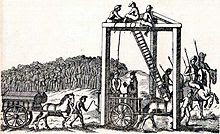
On Monday, September 18, we'll continue our series on the Mementoes of the English Martyrs and Confessors by Father Henry Sebastian Bowden on the Son Rise Morning Show. I'll be on the Son Rise Morning Show at my usual time: about 6:50 a.m. Central/7:50 a.m. Eastern: please listen live here and/or listen to the podcast later here.
As of today, the book is still on sale for $10.00! You cannot say I haven't told often enough!
Father Bowden offers four mementoes of Blessed John Duckett and three of Blessed Ralph Corby, SJ during the month of September. The two martyrs share three mementoes, because although they came to England as missionary priests by separate paths, served in the missionary field in vastly different durations (Duckett for about a year; Corby for 14 years), and were arrested separately, they shared imprisonment in London and went to Tyburn together for execution on September 7, 1644--during the English Civil War. They were both arrested and executed under Parliamentary authority.
For Blessed (then Venerable) John Duckett, on page 300 (September 20) in the book, Father Bowden offers an example of a Catholic priest as an Alter Christus (Another Christ), echoing the scene in the Garden of Gethsemane when Jesus says "If therefore ye seek Me, let these go their way." (John 13:8) in a memory explaining how Father Duckett admitted he was a Catholic priest "To Save Others":
He was taken, in company with two Catholic laymen, as he was going to baptize two children on the Feast of the Visitation, July 2. His captors, the Parliament soldiers, carried him before a committee of the Sequestrators at Sunderland. He declined to answer as to his priesthood and demanded proof, but was committed to prison by reason of the Holy oils and books found on him. Again examined, and again refusing to inculpate himself, he was threatened with lighted matches placed between his fingers to make him confess what he was. This availing nothing he was sent back to prison. After an hour he was again called, and found his two companions on the point of being shipped and sent away, merely because he would not confess who he was. "Seeing this," he says, "and also fearing that the Catholics of the neighbourhood who knew me might suffer, and especially those with whom I lived, I confessed myself to free them and the country." His self-sacrifice was successful, and seemed an inspiration from Heaven. No more inquiry was made after his friends, but Father Duckett was sent up to London in company with Father Corby, a Jesuit, who was taken in these parts as he was going up to the altar to say Mass.
So Father Duckett did not admit immediately to his priesthood, even enduring some torture, but when the two laymen were threatened and he also became concerned for others in the Durham area where he was captured--especially the family or families of the children who were to be baptized--he confessed to save their lives.
The Catholic Encyclopedia offers some details about his life before his arrest, imprisonment, and execution: He was probably a grandson of Venerable [Blessed] James Duckett [a layman executed on April 19, 1601, also at Tyburn], born at Underwinder, in the parish of Sedbergh, Yorkshire, in 1603; died 7 September, 1644. He was ordained priest in 1639 and afterwards went to Paris where he studied three years in the College of Arras. He had an extraordinary gift of prayer, and while yet a student would spend whole nights in contemplation. On his way to the English mission, he spent two months in spiritual exercises, under the direction of his uncle, the Carthusian prior at Nieuport.
Then, when Fathers Duckett and Corby are in prison and are offered an opportunity for one of them to escape, Father Bowden offers the story of their "Holy Rivalry":
RALPH CORBY, alias Darlington, was born near Dublin of English parents, natives of Durham, who had gone over to Ireland for the free exercise of their religion. The piety of the family is sufficiently attested by the fact that both parents and children entered into religion: the father and his three sons into the Society of Jesus, the mother and her daughters into the Order of St. Benedict. After twelve years' hard work, notwithstanding continuous ill-health, among the poorer Catholics in Durham, he was arrested and sent up to London with Father Duckett. They were escorted from Westminster to Newgate by a company of Parliament soldiers, with a captain at their head, beating drums and firing off their muskets through the crowded streets, as if they had been the enemy's generals taken in war as in the old Roman battles. In prison the life of one of them could have been saved by an exchange made for a prisoner in the hand of the Emperor of Germany. The offer was first made to Father Corby, who declined it on the ground that Father Duckett, being younger, could do more work than himself; but he in his turn refused it with thanks, as Father Corby's life, on account of his experience, was of greater value.
He cites a verse from the First Letter of John for this scene: "Behold what manner of charity the Father hath bestowed upon us." (3:1) I wonder what the Puritan authorities thought of them, both rejectiing a chance to be freed, in exile of course (but probably to return).
In describing their executions at Tyburn Tree, Father Bowden offers these details ("The Kiss of Peace"):
They went out to suffer with their tonsures shaved, the one in his Jesuit's habit, the other in his priest's cassock. At the gallows Father Duckett made no speech, but told an heretical minister that he had not come hither to be taught his religion, but to die for it. After a short discourse from Father Corby, the two confessors turned to each other. Together they had been arrested, supported each other by their mutual courage and self-sacrifice, and with a last most loving embrace they together received their eternal crown. ("Salute one another in a holy kiss; all the saints salute you." 2 Cor. 13:12)
With these three mementoes, Father Bowden offers poignant examples of these martyrs' camaraderie in the midst of danger and suffering as they prepared for their executions. They were both beatified in 1929 by Pope Pius XI.
Blessed John Duckett, pray for us!Blessed Ralph Corby, pray for us!
September 11, 2023
Saint John Henry Newman's Political Thought
 Earlier this summer I taught a Graduate level course on "Saint John Henry Newman and the New Evangelization" at Newman University. It's not a class on Newman's life and works exclusively, but a class applying some of Newman's ideas for reviving the Church of England when he was an Anglican minister at the University of Oxford, and his efforts to teach and defend the teachings of the Catholic Church as an Oratorian after his conversion in 1845.
Earlier this summer I taught a Graduate level course on "Saint John Henry Newman and the New Evangelization" at Newman University. It's not a class on Newman's life and works exclusively, but a class applying some of Newman's ideas for reviving the Church of England when he was an Anglican minister at the University of Oxford, and his efforts to teach and defend the teachings of the Catholic Church as an Oratorian after his conversion in 1845.We read many of Newman's Parochial and Plain Sermons, The Dream of Gerontius, excerpts from other works, like the Grammar of Assent, his Letter to the Duke of Norfolk, etc., and various articles and chapters analyzing his life and works.
Several times the students asked me about some aspect of Newman's life and works that didn't immediately touch on the topic of the New Evangelization, focused on the revival of Catholic life and practice among Catholics or those falling or fallen away from the Church in previously Christian or Catholic cultures. I had to tell them that Newman did not write a comprehensive fundamental theological work on Catholic doctrine, moral, sacramental, or spiritual, etc.
Although we rightly often speak of Newman as a theologian, he was not a systematic theologian--he was consistent, but not systematic. He addressed certain themes and topics when he thought they need defending, on certain occasions, like Gladstone's contention that Catholics couldn't follow their (English) consciences after the doctrine of Papal Infallibility was proclaimed, or Pusey's not-so-peaceful discussion of the doctrine of the Immaculate Conception, or the position of the Catholic laity in the Church, particularly regarding practical matters but also regarding the sensus fidelium (the sense of the faithful), etc.
And, as this article by Austin Walker shows, Newman was not a systematic writer about political philosophy, either:
Newman was an occasional and unsystematic writer who never authored a formal treatise on political philosophy. Nor did he often weigh in on the political issues of the day—in fact, the only time he addressed a contemporary issue was when he wrote a series of pseudonymous letters on the Crimean War to chastise an intemperate British public for expecting too much from political life. [Sic: one might argue that Newman's Tamworth Reading Room letters should be included, as they chastised Sir Robert Peel for dictating a “fundamental rule, that no works of controversial divinity shall enter into the library” Peel was establishing for those who could not benefit from a university education at Oxford with the goal of improving their intellects and morals.] However, one can find the key to Newman’s political insights in his treatment of the political status of the church.Newman’s real political concern was the independence and vitality of the church, as viewed through the eyes of the Alexandrian Fathers. As an Anglican, Newman saw the independence of the church most immediately in its relation to the English state. As a Catholic, the same fundamental concerns remained, but they were inflected in a new valence. If Anglican Newman worried about the oppression of the church by the state, Catholic Newman was concerned about the oppression of the church by the predominating philosophy of the day. Liberalism promised an illusory liberty by positing a new mode of human organization, anthropology, and history. Newman’s political project, as both an Anglican and a Catholic, was to reassert a biblical and ecclesial reality that the age was forgetting how to see: the church itself as “an object of veneration and loyalty.”
Walker then unpacks Newman's concerns for the Church of England during his Anglican years, especially as a leader of the Tractarian Movement, and as a Catholic after 1845.
With all the links to the various works throughout the article, it demonstrates one of the great advantages we do have in this technological age: the reader can both appreciate Professor Walker's analysis and read the entire work he cites without reaching for a book on the shelf, thanks to the newmanreader.org website!
Image: bust of Saint John Henry Newman in the garden of the College in Littlemore (c) Stephanie A. Mann (2023)
September 7, 2023
Preview: Blessed Adrian Fortescue and His Maxims
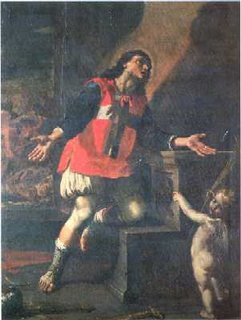 Blessed Adrian Fortescue, another one of Henry VIII's best friends (like St. Thomas More), was executed sometime in early July, 1539 (either July 8 or 9 or 10). He was a Knight of the Realm, a Knight of Malta, and a Dominican Tertiary. On Monday, September 11, we'll continue our series of
Mementoes of the English Martyrs and Confessors
gathered by Father Henry Sebastian Bowden. Please note that the book is still available--as of today--for only $10.00 from the publisher!I'll be on the Son Rise Morning Show at my usual time: about 6:50 a.m. Central/7:50 a.m. Eastern: please listen live here and/or listen to the podcast later here.
Blessed Adrian Fortescue, another one of Henry VIII's best friends (like St. Thomas More), was executed sometime in early July, 1539 (either July 8 or 9 or 10). He was a Knight of the Realm, a Knight of Malta, and a Dominican Tertiary. On Monday, September 11, we'll continue our series of
Mementoes of the English Martyrs and Confessors
gathered by Father Henry Sebastian Bowden. Please note that the book is still available--as of today--for only $10.00 from the publisher!I'll be on the Son Rise Morning Show at my usual time: about 6:50 a.m. Central/7:50 a.m. Eastern: please listen live here and/or listen to the podcast later here.The website of the Dominican Friars of England, Ireland, and Scotland provides this background of his life and times:
Like his forebears, Adrian served King Henry VIII in his ambitious military campaigns. He helped to rout the French the Battle of Spurs in 1513, and fought again in 1523. King Henry rewarded his support and in 1520 invited him to the splendorous Field of the Cloth of Gold where Henry famously wrestled with the King of France. Closer to home, Sir Adrian was made a Justice of the Peace of the county of Oxfordshire. In this period of history, royal favour could also take more peculiar forms. Sir Adrian had the dubious honour of being made a Gentleman of the King’s Privy Chamber, forerunner to the august body now known as the Privy Council.
In addition to being an assiduous servant of the Crown, Sir Adrian was evidently also a man of strong religious conviction and charity. His accounts reveal a number of benefactions to clergy and religious foundations. In 1532, he became a Knight of Devotion in the Order of Malta. The following year in July of 1533, he was admitted as a Dominican Tertiary at Blackfriars, Oxford, which he would visit from Stonor. But he also had a strong association with the Dominican Priory in London. His lodgings in the capital were in the precincts of the Blackfriars, close to the present eponymous tube station.
Sir Adrian was married twice and had children, so like St. Thomas More, he lived an active life as a Catholic layman, as a family man, with great devotion to his faith.
In the Catholic Encyclopedia , J.H. Pollen demonstrates the injustice of his martyrdom, as he was arrested, imprisoned, and included in a Bill of Attainder, without trial or evidence:
All of a sudden this quiet, worthy gentleman was overwhelmed by some unexplained whim of the Tudor tyrant. On 29 August, 1534, he was put under arrest, no one knows why, but released after some months. On 3 February, 1539, he was arrested a second time and sent to the Tower. In April he was condemned untried by an act of attainder; in July he was beheaded. No specific act of treason was alleged against him, but only in general "sedition and refusing allegiance". The attainder, however, went on to decree death against Cardinal Pole and several others because they "adhered themselves to the Bishop of Rome". Catholic tradition was always held that Sir Adrian died for the same cause, and modern Protestant critics have come to the same conclusion. His cultus has always flourished among the Knights of St. John, and he was beatified by Leo XIII in 1895.
Father Bowden does not highlight Blessed Adrian Fortescue's martyrdom, but instead provides a series of maxims he collected. (Pollen describes them thus: "He collected and signed several lists of proverbs and wise saws, which, though not very brilliant, are never offensive or coarse, always sane, and sometimes rise to a high moral or religious level.") Bowden uses the titles "A Martyr's Maxims (1) and (2)" with the verses, "She conducted the just, when he fled from his brother's wrath, through the right ways" (Wisdom 10:10) and "But the wisdom, that is from above, first indeed is chaste." (James 3:17).
Among the maxims:
Above all things love God with all thy heart.
Desire His honour more than the health of thine own soul.
Take heed with all diligence to purge and cleanse thy mind with oft Confession, and raise thy desire or lust from earthly things.
Be you houseled (that is receive Holy Communion) with entire devotion.
Pray often.
Also enforce thee to set thy house at quietness.
Resort to God every hour.
Advance not thy words or deeds by any pride.
Be pitiful to poor folk and help them to thy power, for then thou shalt greatly please God.
Give fair language to all persons, and especially to the poor and needy.
Also be diligent in giving of alms.
In prosperity be meek of heart, and in adversity patient.
And pray continually to God that you may do what is His pleasure.
Neither Father Bowden nor J.H. Pollen indicate where Blessed Adrian Fortescue wrote down these maxims, but this website indicates it was in his Book of Hours; further it notes that the Bodleian Library at the University of Oxford has another book of Fortescue's containing proverbs which also includes a book written by his great-uncle John Fortescue, On Absolute and Limited Monarchy (dangerous reading while King Henry VIII was on the throne!), and passages from Langland's Piers Plowman!
The collection and use of these proverbs served as good preparation for the trials and martyrdom Blessed Adrian Fortescue would endure, imprisoned, found guilty without trial, and beheaded. Henry VIII also suppressed the Knights of St. John and seized their properties in England.
Blessed Adrian Fortescue, pray for us!



